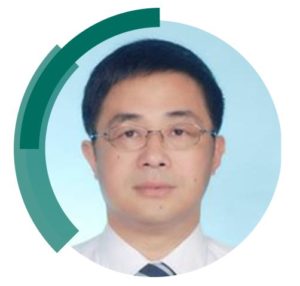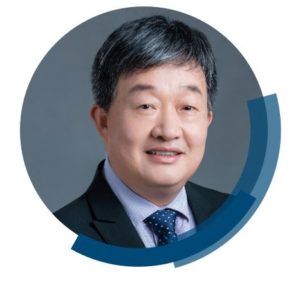Materials Horizons are delighted to welcome Professor Yong Cui from Shanghai Jiao Tong University in China as a Scientific Editor.

Yong Cui received his PhD in 1999 from Fujian Institute of Research on the Structure of Matter, Chinese Academy of Sciences, and conducted postdoctoral research at the University of Science and Technology of China, University of North Carolina at Chapel Hill and University of Chicago from 1999 to 2005. He joined School of Chemistry & Chemical Engineering, Shanghai Jiao Tong University in 2005, where he is now a chair professor of chemistry. He is a Fellow of the Royal Society of Chemistry. His research interest focuses on the design and synthesis of porous materials, especially frameworks materials and chiral materials, for catalysis, adsorption, separation, sensing and optics.
Read our interview with Yong below.
1. Why did you choose to specialize in your specific research field?
Nature makes pervasive use of homochirality (e.g., D-sugars and L-peptides) to assemble biomolecules, whose interactions determine life processes, while biological homochirality is still one of the major unsolved problems in science. My research interest is thus focused on the design and development of chiral crystalline materials through hierarchical self-assembly of suitably designed chiral building blocks, with the aim to fundamentally understanding how molecular-scale chirality could be significantly transmitted and amplified across differing length scales. Eventually, we aim to develop useful chiral materials with unexpected advantages relevant to materials science, molecular biology, nanotechnology and precision medicine.
2. What do you see as the biggest challenges facing researchers who work in your field?
Frankly speaking, there are lots of challenges and difficulties in this field. If I have to choose the biggest one, I think it should be how to rationally design and precisely synthesize chiral materials enabling outstanding enantioselective performance that could compare with (even beyond) natural systems.
3. What excites you most about your area of research and what has been the most exciting moment of your career so far?
One of the most exciting moments of my research was when we developed a new type of 2D materials that were achieved through exfoliation of molecule crystals. Against expectation, the free-standing homochiral monolayer crystallites rely purely on weak non-covalent forces to maintain their integrity. Our finding suggests the possibility of greatly increasing the range and diversity of 2D materials.
The most exciting moment of my career have always been related to my students who get really exciting experimental results or discover new experimental phenomena etc. I am very proud of my students who will continue to devote themself to scientific research.
4. What has been the most challenging moment of your career so far?
The most challenging moment should be the supervision of a research group, either a small or big team, but this process seems to be very rewarding. Looking back now, I was very lucky to have lots of incredible advisors, colleagues, and friends, who taught me how to be an independent scientist. I’m also grateful for working with those talented students and I really hope they have enjoyed their time in my research group.
5. Which of your Royal Society of Chemistry publications are you most proud of and why?
I would have to say that I love them all. We spend many times and make great efforts for these fundamental researches. However, if I have to select one piece of them, it would probably be the research regarding the design and synthesis of a homochiral Cr-salen-based MOF for catalysing broad-scope asymmetric transformations, including the Nazarov cyclization, aminolysis reaction, and Diels–Alder and hetero Diels–Alder reactions. This work demonstrates the superior reactivity of Cr-salen embedded crystalline porous materials, which represents an important step towards practical applications.
6. Why do you feel that researchers should choose to publish their work in Materials Horizons?
Materials Horizons is a high-profile, prestigious journal publishing rigorously peer-reviewed research across broad-scope disciplines. The high impact factor (up to 15.717) of this journal is indicative of that the editorial community are leading this journal to the cutting-edge research directions. That’s important for researchers, knowing that you are publishing your work in an ascending journal with strong reputation.
7. What attracted you to join the Editorial Board of Materials Horizons?
The editorial board of Materials Horizons has done a great job in attracting high-quality and innovative material science research. I believe that I could help to further improve the impact of Materials Horizons and help to expand the scope of readers in China. I can see this would be a golden opportunity for me to learn how to participate and promote the development of Materials Horizons and engage the communication between the editorial board and the authors. I’m very happy to work as a board member to make Materials Horizons as one of the most exciting and high impact journals.
Submit to Materials Horizons now! Check out our author guidelines for information on our article types or find out more about the advantages of publishing in a Royal Society of Chemistry journal.
Keep up to date with our latest articles, reviews, collections & more by following us on Twitter, Facebook or by signing up to our E-Alerts.












